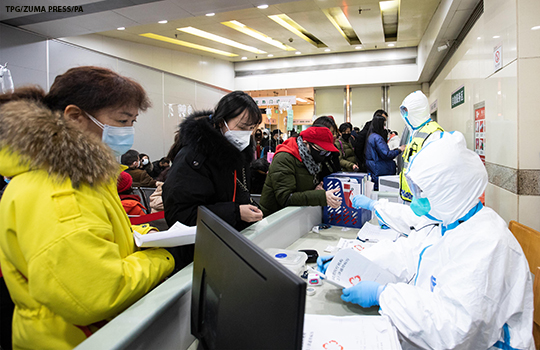Medical education during the COVID-19 outbreak

The best way to learn clinical medicine is at the bedside. Medical students and postgraduate trainees benefit a great deal from clinical experience with real patients. But an infectious disease outbreak like COVID-19, poses particular challenges for medical education.
All learners at all levels need to know about the infectious disease – so that they will be better able to diagnose and manage affected patients. But learning at the bedside can be risky. Medical students and residents can fall ill themselves. Even if they do not become seriously ill, they can be effective spreaders of the disease. The Ebola outbreak in Sierra Leone shows the effect that an outbreak can have on a country’s health workforce.
Learning from previous outbreaks
COVID-19 can affect patients of all ages – although at present it seems that older people with pre-existing illnesses are at greatest risk of complications. However even fit and healthy people can be seriously affected and can spread the disease. So how do we help medical students and residents learn about new infectious disease outbreaks, and at the same time keep them and their contacts safe from infection?
There are no easy answers to this question. But we can learn from the experiences of medical schools during previous outbreaks. In 2003, 17 medical students at the Chinese University of Hong Kong became ill with SARS. The authorities moved quickly and suspended clinical teaching. (1) Even though technology-enhanced learning was still in its infancy, the medical school made the most of their available resources. Lecture slides were placed on the faculty website. Vivas were held via teleconference. There were plans to have problem-based learning tutorials on online chatrooms – but this was not needed as the outbreak came under control.
The role of technology during an outbreak
Today, technology-enhanced learning has matured and there are few reasons for not exploiting it to the maximum extent possible to educate medical students and doctors at all levels. Clinical decision support resources can provide detailed knowledge about infectious diseases – and these can now be accessed on all devices and at all times both online and offline. Content can also be continually updated – which is essential in the early days of a rapidly evolving outbreak. Multimedia learning resources can help students and doctors learn skills – such as how to put on or take off personal protective equipment. All can happen at no risk to the learners. Such technology can also help free up faculty time – which will be at a premium during an outbreak.
Access our latest advice on COVID-19 for free
Our own clinical decision support tool is BMJ Best Practice. We have recently launched a new topic on COVID-19 and will keep it continually updated throughout the course of the outbreak. It is freely available to all healthcare professionals. Please do get in touch if you think that there are other things that we could or should be doing to support ongoing medical education during this coronavirus outbreak. Please email kmwalsh@bmj.com.
Other BMJ resourcesbestpractice.bmj.com/…opics/en-us/3000165
Overview of coronaviruses (SARS, MERS, COVID-19) - BMJ Best Practice
Coronavirus (Covid-19): Latest news and resources - The BMJ
Personal protective equipment and isolation for high consequence infectious diseases - BMJ Learning
References
1. Patil NG, Yan Y. SARS and its effect on medical education in Hong Kong. Medical education. 2003 Dec 1;37(12):1127-8.
Conflicts of interest
Kieran Walsh works for BMJ Learning and BMJ Best Practice which produces e-learning resources and clinical decision support tools on a range of conditions – including COVID 19.
